Beginner's Guide to Marvel Characters: Simple Story Breakdowns
Category: Marvel
Your Simple Starting Point for Marvel Characters
Are you new to Marvel and feeling overwhelmed by its vast universe of characters and stories? You're not alone. Many casual fans and newcomers want to dive into Marvel but struggle to understand where to begin amid dozens of heroes, villains, and comic arcs. This guide is crafted just for you — breaking down Marvel characters into simple, standalone narratives without assuming deep prior knowledge. Whether you found this post searching "Beginner's guide to Marvel characters" or just curious about understanding your favorite heroes better, our goal is to make Marvel approachable and fun. We'll clarify who the core characters are, what makes them unique, and how their stories connect without confusing crossovers or complex timelines. Unlike lengthy encyclopedias or spoilers-heavy sites, this post delivers clear, digestible profiles and story backgrounds tailored for casual fans seeking a friendly intro. Read on to start your Marvel journey on the right foot, gain confidence in talking about these iconic characters, and discover where to explore next — all simplified and jargon-free.
- Your Simple Starting Point for Marvel Characters
- Overview of the Marvel Universe: Setting, Themes, and Key Concepts
- Who Are the Iconic Marvel Heroes?
- Meet the Villains: Understanding Marvel’s Most Famous Foes
- Understanding Marvel Teams: The Power of Unity in the Marvel Universe
- How Marvel Characters Connect: Understanding the Shared Universe
- Character Evolution Simplified: How Marvel Heroes Develop Over Time
- Watching Marvel on Screen: How to Start with Marvel Movies and Disney+ Shows
- Frequently Used Marvel Terms and Concepts: Key Definitions for New Fans
- Diving Deeper: Resources to Explore Marvel Characters and Stories
- Tips for Enjoying Marvel Stories: Tailoring Your Experience to What You Love
Overview of the Marvel Universe: Setting, Themes, and Key Concepts
To truly appreciate Marvel characters, it helps to understand the basic setting and themes that tie the Marvel Universe together. At its core, Marvel stories happen in a version of our world—Earth—populated by everyday people alongside superheroes, villains, and fantastical beings. This blend of the familiar and the extraordinary is what makes Marvel physics-bending but relatable. You’ll find heroes like Spider-Man swinging through New York City streets, while cosmic adventures take place across galaxies with Guardians of the Galaxy.
Major Themes in Marvel Stories
- Heroism and Responsibility: Many Marvel characters grapple with using their powers wisely, often facing moral dilemmas about right and wrong.
- Identity and Diversity: Characters come from varied backgrounds, ethnicities, and experiences, making the Marvel Universe rich and inclusive.
- Conflict and Growth: Marvel heroes evolve through personal challenges, loss, and rivalry, which adds depth to their narratives.
- Teamwork and Community: Many stories highlight collaboration, whether through groups like the Avengers or the X-Men, emphasizing that even the strongest heroes need allies.
Understanding Different Marvel Media: Comics, Movies, and Shows
Marvel characters appear across several mediums, each with unique storytelling approaches:
- Comics: The original source, with decades of stories that often dive deep into character backstories, alternate realities, and complex arcs. Comics can be dense but offer the richest detail for fans wanting to explore beyond mainstream stories.
- Movies: The Marvel Cinematic Universe (MCU) adapts characters into a shared film franchise focused on interconnected, blockbuster stories. While they follow some comic plots, movies streamline characters and events for broader audiences.
- Television Shows: Marvel TV series, like those on Disney+, bridge movies and comics by exploring side characters and new stories with more time to develop plots episodically.
Knowing these differences helps casual fans decide where to start—for example, watching MCU movies for a visually exciting intro or reading key comics for deeper character insights. Whichever you choose, the Marvel Universe remains a vibrant world full of heroes and adventures waiting to be discovered.
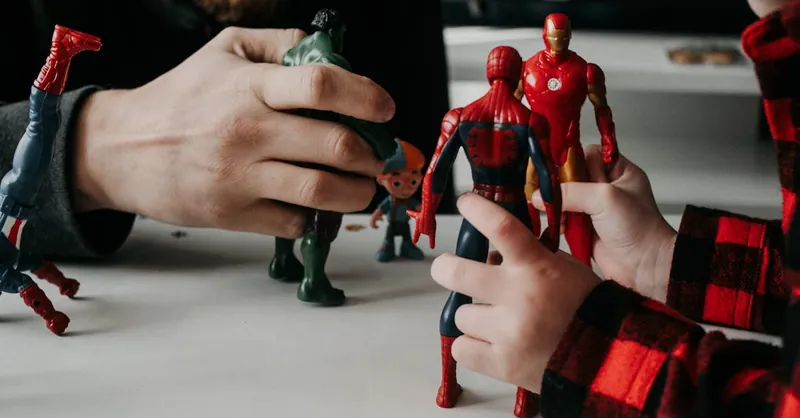
Image courtesy of Lisa from Pexels
Who Are the Iconic Marvel Heroes?
If you’re just beginning your Marvel adventure, it helps to start with the most iconic heroes who define the Marvel Universe. These characters have rich backstories, unique powers, and compelling personalities that make them favorites among fans worldwide. Here’s a simple introduction to four key Marvel heroes—Spider-Man, Iron Man, Captain America, and Black Panther—breaking down their origins, powers, and what makes them stand out.
1. Spider-Man (Peter Parker)
- Origin: Bitten by a radioactive spider during a school field trip, Peter gains spider-like abilities. After a personal tragedy, he embraces the motto, “With great power comes great responsibility.”
- Powers: Superhuman strength, agility, ability to cling to walls, and “spider-sense” that warns him of danger.
- Why He’s Iconic: Peter is relatable as a young, everyday person juggling life’s challenges with superhero duties. His humor and humanity make Spider-Man Marvel’s quintessential underdog.
2. Iron Man (Tony Stark)
- Origin: A billionaire genius and industrialist, Tony builds a high-tech armored suit to escape captivity and later uses it to fight evil.
- Powers: Master inventor and engineer with cutting-edge technology in his armor, including flight, weapons, and enhanced durability.
- Why He’s Iconic: Tony’s charisma, intelligence, and flawed heroism showcase how human ingenuity can power a hero. He’s also a key leader in Marvel’s team stories like the Avengers.
3. Captain America (Steve Rogers)
- Origin: A frail young man enhanced by a super-soldier serum during World War II, chosen to fight for justice and freedom.
- Powers: Enhanced strength, agility, endurance, and an almost indestructible shield used both defensively and offensively.
- Why He’s Iconic: Captain America symbolizes courage, patriotism, and self-sacrifice. His unwavering moral compass makes him a natural leader and role model.
4. Black Panther (T’Challa)
- Origin: King of the advanced African nation Wakanda, T’Challa inherits the mantle of Black Panther after his father’s death.
- Powers: Enhanced abilities from a mystical herb, expert martial artist, and access to highly advanced Wakandan technology.
- Why He’s Iconic: Black Panther stands out for his cultural significance and portrayal as a powerful, intelligent, and noble hero breaking racial and social barriers in Marvel storytelling.
These heroes are great entry points if you want to understand Marvel’s blend of heroism, personal struggle, and unique abilities. Each has appeared in multiple comics, movies, and shows, making them accessible through different mediums depending on what interests you most. Starting with these iconic characters gives you a solid foundation to enjoy the vast Marvel Universe with confidence.
Image courtesy of Jeanetta Richardson-Anhalt
Meet the Villains: Understanding Marvel’s Most Famous Foes
No Marvel story is complete without its villains—the complex adversaries whose motivations and actions challenge heroes and drive unforgettable conflicts. For beginners, some villains might seem intimidating or confusing, but many are deeply relatable characters with clear goals that shape the Marvel Universe in lasting ways. Let’s break down three of the most iconic villains—Thanos, Loki, and Magneto—to understand their origins, motivations, and impact on Marvel stories.
1. Thanos: The Mad Titan with a Cosmic Quest
- Who is Thanos? A powerful alien warlord from the planet Titan who believes in balance through destruction.
- Motivation: Thanos aims to eliminate half of all life in the universe, convinced that overpopulation causes suffering and resource depletion. He seeks the Infinity Stones, cosmic gems with immense power, to achieve this with a snap of his fingers.
- Impact: As the main antagonist in the epic Infinity Saga of the Marvel Cinematic Universe, Thanos’ quest leads to massive team-ups of heroes in the Avengers and Guardians of the Galaxy. His chilling ideology sparks philosophical debates about sacrifice and morality.
2. Loki: The Trickster Prince Struggling for Identity
- Who is Loki? The adopted brother of Thor and Norse god of mischief, known for clever schemes and shape-shifting.
- Motivation: Loki’s actions stem from a deep desire for recognition, power, and acceptance, often feeling overshadowed by Thor. His trickery can be selfish or, at times, unexpectedly heroic.
- Impact: Loki’s unpredictable nature adds complexity to many Thor and Avengers stories. His character explores themes of family, betrayal, and redemption, making him a fan-favorite anti-hero rather than a simple villain.
3. Magneto: The Revolutionary with a Cause
- Who is Magneto? A powerful mutant who can control metal and magnetic fields.
- Motivation: Having endured discrimination and trauma as a Holocaust survivor, Magneto fights to protect mutantkind from human oppression—often through militant means. He believes mutants should dominate their own destiny rather than seek peace with humans.
- Impact: As the primary antagonist turned sometimes ally in X-Men stories, Magneto represents the complex struggle for minority rights and survival. His conflict with Professor X highlights different paths toward coexistence and justice.
Why Knowing Villains Matters for New Marvel Fans
Understanding these villains enriches your Marvel experience by revealing that Marvel stories aren’t just about heroes fighting evil—they’re about clashing ideals, personal struggles, and complex motivations that make the narrative richer and more relatable. Villains like Thanos, Loki, and Magneto aren’t just obstacles; they challenge heroes to grow and question their own beliefs. Recognizing their stories and viewpoints helps casual fans appreciate the emotional depth and moral nuances that make Marvel narratives so compelling.
Starting your Marvel journey with these iconic villains alongside the heroes offers a balanced view of the universe’s drama, making it easier to follow plots in movies, shows, or comics without feeling lost in superhero versus villain dynamics.
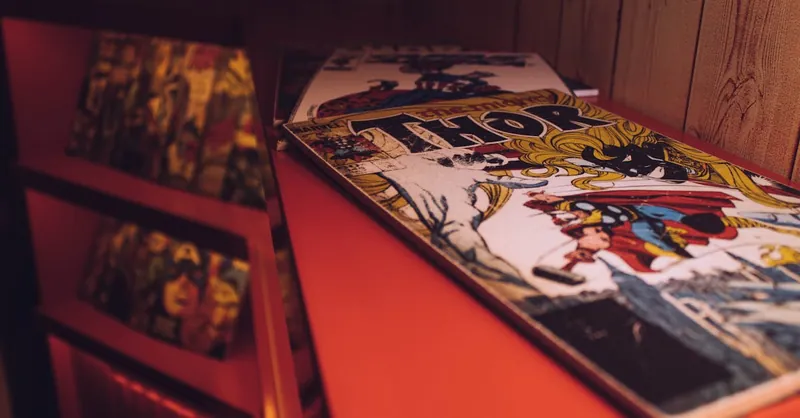
Image courtesy of Rafael Titoneli
Understanding Marvel Teams: The Power of Unity in the Marvel Universe
One of the most exciting aspects of Marvel stories is the way heroes come together to form teams. These groups band together to face threats too big for any one hero to handle alone. For beginners, knowing the major Marvel teams like The Avengers, X-Men, and Guardians of the Galaxy is essential because they showcase how different characters and their unique abilities combine into powerful forces that shape the Marvel Universe.
1. The Avengers: Earth's Mightiest Heroes
- Who They Are: A team of superheroes including iconic figures like Iron Man, Captain America, Thor, and the Hulk.
- Purpose: The Avengers assemble to protect Earth from large-scale threats—whether alien invasions, powerful villains, or catastrophic disasters.
- Why They Matter: Introduced as a “superhero team-up,” the Avengers highlight themes of teamwork, leadership, and sacrifice. Their stories show how individuals with very different backgrounds and personalities can unite to overcome seemingly impossible odds. For new fans, the Avengers are often the gateway into Marvel’s cinematic and comic universes due to their popularity and interconnected storylines.
2. The X-Men: Mutants Fighting for Acceptance
- Who They Are: A group of mutants—people born with extraordinary powers—led by Professor Charles Xavier.
- Purpose: The X-Men fight to protect both mutants and humans and to promote peaceful coexistence in a world that fears mutation.
- Why They Matter: The X-Men stories explore themes of prejudice, identity, and civil rights, making them richly emotional narratives that resonate beyond typical superhero fare. For casual fans, understanding the X-Men provides insight into Marvel’s more socially conscious storytelling and introduces complex characters like Wolverine and Storm.
3. Guardians of the Galaxy: Cosmic Misfits Saving the Universe
- Who They Are: A ragtag team of space heroes, including Star-Lord, Gamora, Drax, Rocket, and Groot.
- Purpose: Operating mostly in the galaxy’s outer reaches, they protect the universe from cosmic-level threats and explore adventures far beyond Earth.
- Why They Matter: Guardians bring energy, humor, and heart to Marvel’s cosmic stories. Their diverse and often flawed personalities emphasize found family, showing that heroes don’t always come from traditional backgrounds. For newcomers, Guardians of the Galaxy offer a fun, less Earth-bound perspective on the Marvel Universe’s vastness.
Why Marvel Teams are Essential for New Fans
Marvel teams allow for dynamic storytelling across multiple characters and genres—from street-level heroics to galactic battles. They often serve as entry points for new fans to discover several characters at once, making it easier to engage with Marvel’s vast content. Whether you're watching blockbuster films or reading comics, teams like the Avengers, X-Men, and Guardians of the Galaxy highlight the power of collaboration in a universe where heroes, despite their differences, rise together against common threats. Understanding these teams deepens your appreciation of Marvel’s shared universe concept and prepares you for some of the most popular and thrilling stories Marvel has to offer.

Image courtesy of RDNE Stock project
How Marvel Characters Connect: Understanding the Shared Universe
One of the most exciting and unique features of Marvel stories is the shared universe concept. Unlike standalone stories, Marvel characters often exist in a connected world where their adventures sometimes overlap. This means heroes and villains can meet, team up, or even clash in ways that enrich their individual stories without requiring you to follow every single comic, movie, or show. For newcomers, this idea might seem daunting, but it can be understood simply through a few straightforward examples.
What is a Shared Universe?
In Marvel’s shared universe, characters live in the same world and timeline. This allows for crossovers and team-ups where multiple heroes appear together to face threats too big for one hero alone. It also means events in one character’s story can impact others, creating a dynamic and evolving world. However, you don’t need to track every detail or timeline—each story usually stands on its own, with the crossovers acting as exciting bonus moments.
Simple Examples of Character Connections
-
The Avengers Assemble: When the villain Loki threatens Earth, iconic heroes like Iron Man, Captain America, Thor, and Hulk come together, showing how their individual quests and backgrounds intersect. Watching or reading an Avengers story introduces you to multiple core heroes while delivering a thrilling collective adventure.
-
Spider-Man Meets the Guardians of the Galaxy: In some stories, Spider-Man finds himself teaming up with cosmic heroes like Star-Lord and Groot, expanding the story from Earth-bound crime-fighting to galactic escapades, all while keeping events easy to follow.
-
Wolverine and the X-Men Crossing Paths: Wolverine, originally a solo character, eventually joins and interacts with the broader X-Men team, blending his personal narrative with larger mutant-related conflicts.
Why Shared Universe Matters for New Fans
Understanding that Marvel characters coexist in a shared world helps you enjoy their stories without confusion. You can explore a favorite character’s journey alone or dive into team-ups that highlight collaboration and evolving relationships. This approach keeps Marvel accessible—whether you prefer movies, comics, or TV shows—because stories are crafted to welcome new fans while rewarding longtime followers. Knowing a bit about these connections also enhances your experience when characters appear unexpectedly and deepens your appreciation for Marvel’s extensive storytelling.
In short, Marvel’s shared universe is a creative way to keep stories fresh and interconnected, offering a wide variety of entry points for casual fans to jump in and enjoy beloved characters both individually and together.
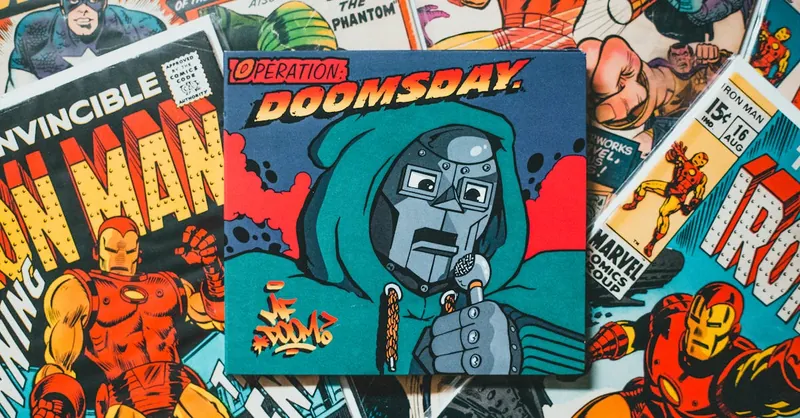
Image courtesy of Erik Mclean
Character Evolution Simplified: How Marvel Heroes Develop Over Time
One of the most captivating aspects of Marvel characters is their evolution over time. Unlike static superheroes, Marvel’s heroes grow, face setbacks, and change in ways that mirror real human experiences. For casual fans and newcomers, it can be intimidating to dive into decades of comic history, but key moments in a character’s journey can be highlighted simply to show how they develop without needing dense backstory knowledge.
Why Character Evolution Matters
Marvel heroes aren’t defined solely by their powers—they are shaped by their choices, challenges, and pivotal experiences. This evolution adds layers of depth, making characters more relatable and their stories more engaging. Learning about these key turning points helps new fans connect emotionally and understand the motivations behind a hero’s actions.
Simple Examples of Character Growth
-
Spider-Man’s Responsibility: Peter Parker starts as a carefree teen who accidentally gains spider powers. The tragic loss of his Uncle Ben marks a critical moment where Peter embraces his famous motto, “With great power comes great responsibility,” shifting from self-interest to selfless heroism.
-
Iron Man’s Redemption: Tony Stark begins as a reckless weapons manufacturer focused on profit. After a life-threatening capture and injury, he rebuilds himself as Iron Man, dedicating his genius and technology to protecting others, reflecting a journey from selfishness to accountability.
-
Captain America’s Adaptation: Steve Rogers is a World War II super-soldier frozen in time. Upon returning to the modern world, he struggles to reconcile his 1940s values with contemporary issues, showcasing personal growth as he redefines what patriotism means in a changing society.
-
Black Panther’s Leadership: T’Challa’s evolution from a prince mourning his father’s death to a wise king embraces both tradition and innovation. His journey highlights the balance between honoring heritage and leading progress, making him a dynamic and inspiring figure.
Key Takeaway for New Fans
Understanding these defining moments allows casual Marvel fans to appreciate the emotional and moral complexity of heroes without needing to read entire comic runs. Character evolution in Marvel is about overcoming adversity, learning from mistakes, and growing into the best versions of themselves. This narrative approach makes Marvel stories accessible and meaningful, inviting newcomers to experience the heroes’ journeys at their own pace while feeling connected to timeless themes of growth, redemption, and identity.
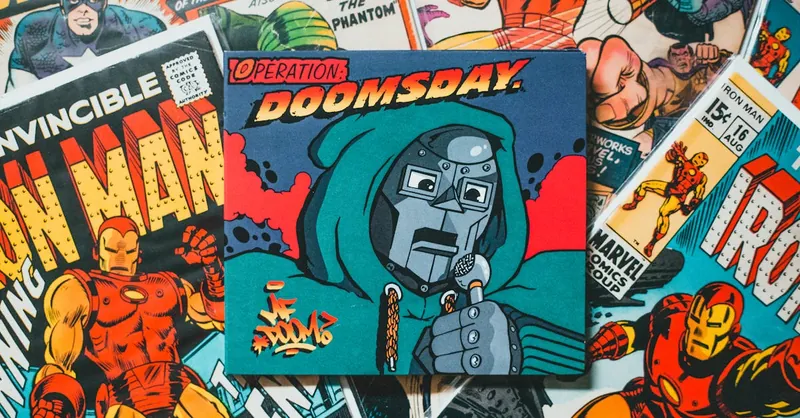
Image courtesy of Erik Mclean
Watching Marvel on Screen: How to Start with Marvel Movies and Disney+ Shows
If you’re new to Marvel and wondering where to begin, watching Marvel movies and Disney+ shows is one of the most accessible and engaging ways to experience these characters and stories. The Marvel Cinematic Universe (MCU) has crafted a vast collection of films and series designed to be enjoyed both individually and as part of a larger narrative, perfect for casual fans and newcomers alike. Here’s a simple guide to help you start watching Marvel on screen, linking key characters to recommended viewing orders tailored for beginners.
Best Viewing Orders for Newcomers
- Begin with the Original MCU Phase One Movies
Start with the foundational movies: Iron Man (2008), The Incredible Hulk (2008), Iron Man 2 (2010), Thor (2011), Captain America: The First Avenger (2011), and conclude with The Avengers (2012). - Why? These films introduce core characters like Iron Man, Captain America, Thor, and Hulk, building the foundation for Marvel’s shared universe and iconic team dynamics.
-
Characters Introduced: Iron Man, Captain America, Thor, Hulk, Black Widow, Hawkeye
-
Explore Standalone Character Films and Sequels
After Phase One, you can watch individual character sequels and spinoffs such as Spider-Man: Homecoming, Black Panther, and Doctor Strange. These focus on beloved heroes in their own stories while expanding the MCU’s world. - Why? This approach lets you connect deeply with characters you like before jumping into bigger team-up films.
-
Characters Introduced: Spider-Man, Black Panther, Doctor Strange, Ant-Man, Captain Marvel
-
Watch Major Team-Ups and Crossover Events
Key movies like Avengers: Infinity War (2018) and Avengers: Endgame (2019) bring together multiple heroes and villains, delivering epic stakes and resolutions. Watching these after individual character arcs gives more impact. -
Why? These films highlight the shared universe concept in action and reward viewers familiar with the characters and their journeys.
-
Dive into Disney+ Shows to Expand Stories
Series like WandaVision, The Falcon and the Winter Soldier, Loki, and Ms. Marvel explore side stories, character development, and new heroes in more depth. - Why? These shows often connect directly to the MCU movies, enriching the larger narrative and introducing fans to next-generation heroes.
- Recommended for: Fans wanting character-driven plots and fresh perspectives in a binge-watchable format.
Linking Characters to Viewing Recommendations
| Marvel Character | Recommended Screen Start | Notes |
|---|---|---|
| Spider-Man | Spider-Man: Homecoming (2017) | Introduction within MCU post-Phase One. |
| Iron Man | Iron Man (2008) | The MCU’s starting point and cornerstone. |
| Captain America | Captain America: The First Avenger (2011) | Origin story set during WWII. |
| Black Panther | Black Panther (2018) | Independent story with cultural depth. |
| Loki | Thor (2011), then Loki (Disney+ series) | Shows Loki's development across formats. |
| Guardians of the Galaxy | Guardians of the Galaxy (2014) | Cosmic adventures outside Earth. |
| Wanda Maximoff (Scarlet Witch) | Avengers: Age of Ultron (2015), then WandaVision (Disney+) | In-depth character exploration in the series. |
Tips for New Viewers
- Watch in Release Order: This is the easiest way to follow MCU stories as they unfolded and maintain surprises.
- Skip or Save Complex Films: Some Marvel content like Doctor Strange or Ant-Man can be watched later without losing the main thread.
- Use Streaming Platform Playlists: Disney+ often curates watchlists to guide newcomers through the MCU efficiently.
- Enjoy at Your Own Pace: Marvel’s stories are designed to be enjoyable individually—no need to binge everything immediately.
By starting with these movies and shows, casual fans get a clear, exciting introduction to Marvel’s characters, their powers, and the overarching stories. This structured viewing also builds confidence in recognizing character connections and appreciating Marvel’s shared universe, opening the door for deeper exploration in comics and beyond.
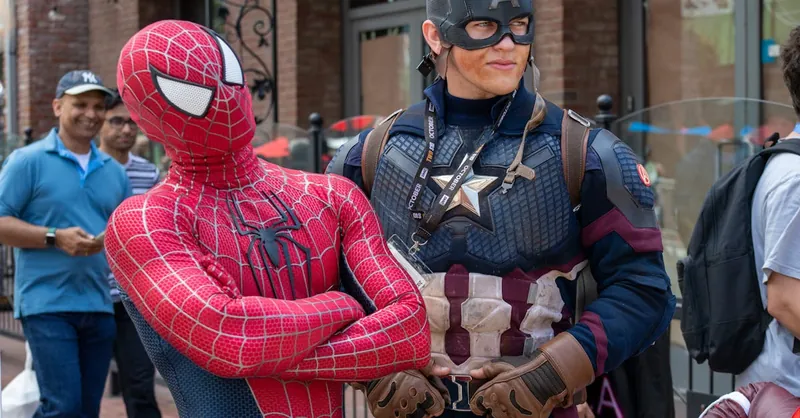
Image courtesy of Thom Gonzalez
Frequently Used Marvel Terms and Concepts: Key Definitions for New Fans
To fully enjoy Marvel stories and understand its characters, it’s helpful to know some of the common Marvel terms and concepts that often appear in comics, movies, and shows. These terms shape character backgrounds, plotlines, and the overall Marvel Universe, making them essential for casual fans and newcomers seeking clarity without confusion.
1. Mutants
- Who are Mutants? Mutants are humans born with a genetic mutation called the "X-gene" that gives them superhuman abilities. This mutation usually emerges during puberty or under stress.
- Why it matters: Mutants face discrimination and fear from regular humans, a central theme in X-Men stories. Notable mutants include Wolverine, Cyclops, and Magneto.
- Common confusion: Not all Marvel heroes are mutants; for example, Spider-Man is a superhero but not a mutant because his powers result from a spider bite, not genetics.
2. Vibranium
- What is Vibranium? A rare, nearly indestructible metal originally discovered in the fictional African nation of Wakanda.
- Why it’s special: Vibranium can absorb sound, energy, and vibrations, making it incredibly valuable for technology and weapons. Black Panther’s suit and Captain America’s iconic shield are made from vibranium.
- Importance: Vibranium symbolizes Wakanda's advanced technology and cultural strength, making it central to many Marvel plots.
3. Infinity Stones
- What are Infinity Stones? Six immensely powerful cosmic gems that control fundamental aspects of existence: Space, Time, Reality, Power, Mind, and Soul.
- Role in Marvel: When combined (often in the Infinity Gauntlet), these stones grant the wielder god-like powers. This quest to collect all stones is the driving force behind major story arcs like the Infinity Saga and the villain Thanos’ mission.
- Why you should know: Infinity Stones frequently appear in Marvel movies and comics, influencing many character destinies and universe-wide events.
4. Super-Soldier Serum
- What is it? A special experimental formula that enhances human physical and mental abilities to their peak.
- Famous user: Steve Rogers (Captain America) received the serum, transforming him from a frail man into the super-soldier hero.
- Impact: The serum is often referenced in Marvel stories relating to enhanced strength, endurance, and heroic origin.
5. Cosmic Entities and Realms
- What are they? Higher-dimensional beings or places beyond Earth’s realm, such as Eternity, the Living Tribunal, or alternate dimensions like the Dark Dimension.
- Why they matter: Characters like Doctor Strange and the Guardians of the Galaxy interact with cosmic entities and travel across these realms, expanding Marvel’s storytelling beyond normal Earth settings.
- Understanding scope: Recognizing these cosmic concepts helps make sense of Marvel’s space and magic-based adventures.
6. Secret Identities
- Definition: Many Marvel heroes keep a separate civilian identity to protect themselves and loved ones. For example, Peter Parker is Spider-Man’s secret identity.
- Why it’s important: Secret identities often create dramatic tension and deepen character relationships, revealing the human side of superheroes.
7. Enhanced Humans vs. Mutants vs. Aliens
- Enhanced Humans: Individuals like Tony Stark (Iron Man) who use technology or scientific means to gain powers.
- Mutants: Born with natural genetic abilities (like the X-Men).
- Aliens: Extraterrestrial beings with unique powers or advanced tech (like Thor or the Guardians of the Galaxy).
Knowing these distinctions clarifies the diverse origins of Marvel heroes and villains.
By familiarizing yourself with these fundamental Marvel terms—mutants, vibranium, infinity stones, and others—you’ll gain a better understanding of characters’ powers, motivations, and the universe’s complex storytelling web. These concepts serve as building blocks that make Marvel’s vast and sometimes overwhelming world much more approachable and enjoyable for new fans.
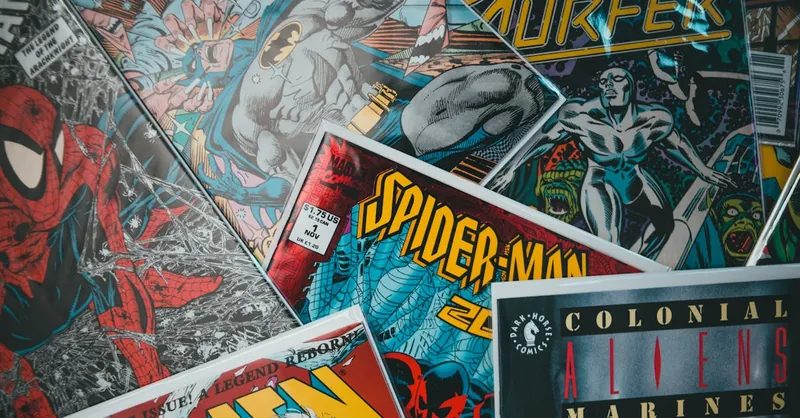
Image courtesy of Erik Mclean
Diving Deeper: Resources to Explore Marvel Characters and Stories
Ready to take your Marvel journey beyond the basics? Whether you want to dig into thrilling comic books, uncover rich character histories in official Marvel guides, or binge-watch essential movies and shows, there are plenty of beginner-friendly resources designed to help casual fans confidently explore the Marvel Universe at their own pace.
Top Beginner-Friendly Marvel Comic Series
-
“Marvel Essentials” Collections
These trade paperbacks compile classic story arcs featuring core heroes like Spider-Man, Iron Man, and Captain America, making it easy to read complete stories without getting lost in thousands of issues. -
“Ultimate” Marvel Series
Start with Ultimate Spider-Man or Ultimate X-Men, which present modernized, standalone versions of popular characters with fresh takes and simplified continuity—perfect for newcomers. -
Character-Specific Runs
Look for well-reviewed solo arcs such as “Black Panther” by Ta-Nehisi Coates or “Ms. Marvel” by G. Willow Wilson, which bring diverse perspectives and accessible storytelling.
Official Marvel Books and Guides
- Marvel Encyclopedia (Updated Editions): These guides offer clear profiles, timelines, and artwork, providing a visual and narrative overview of characters and teams without overwhelming detail.
- “Marvel Studios: The First Ten Years”—A great read for movie fans wanting to understand how characters and stories evolved onscreen.
- Character Biographies and Origin Books: These official publications break down backstories simply, often including beginner-friendly commentary.
Digital Platforms and Apps
- Marvel Unlimited: A subscription service with thousands of digital comics accessible on-demand. It offers curated reading lists for new fans and lets you explore at your own pace.
- Disney+: The go-to streaming platform for all MCU movies and Marvel TV series, offering curated Marvel collections and new release notifications.
- Marvel’s Official Website and Social Channels: Updated character spotlights, story summaries, and interactive quizzes make learning about Marvel fun and straightforward.
Tips for New Fans Exploring Further
- Start Small: Focus on one character or team you like, and gradually explore related comics, films, and shows.
- Use Curated Reading Guides: Many fan sites and Marvel themselves provide recommended reading orders that avoid complex crossovers.
- Join Online Communities: Places like Reddit’s r/Marvel or fan forums allow beginner-friendly discussions to ask questions and get suggestions.
- Mix and Match Media: Combine watching movies with reading comics or guides for a richer, multi-dimensional Marvel experience.
By leveraging these beginner-friendly resources, casual fans can confidently deepen their Marvel knowledge, enjoy fresh perspectives on beloved heroes and villains, and navigate the expansive Marvel Universe without feeling overwhelmed. Whether you prefer printed comics, digital media, or cinematic adventures, stepping deeper into Marvel has never been more accessible.
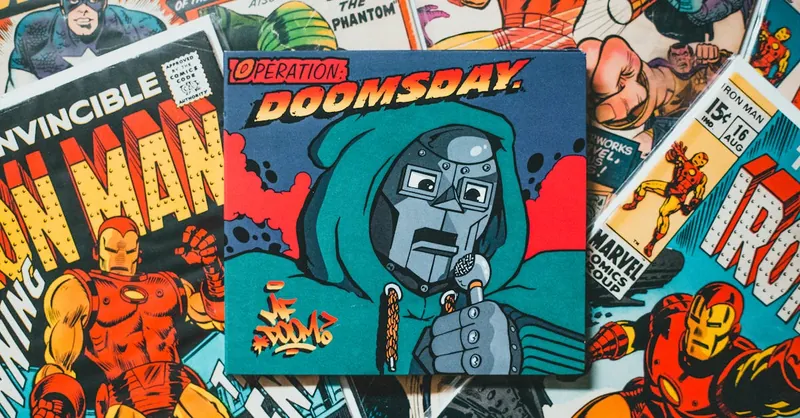
Image courtesy of Erik Mclean
Tips for Enjoying Marvel Stories: Tailoring Your Experience to What You Love
Marvel’s vast universe offers something for every kind of fan—from heart-pounding action and witty humor to deep, thoughtful storytelling. As a casual fan or newcomer, the best way to enjoy Marvel content is to focus on the elements that resonate most with you. This personalized approach makes diving into Marvel less overwhelming and more rewarding.
Discover What Sparks Your Interest
-
If You Love Action and Adventure:
Start with the explosive, high-energy stories featuring classic superheroes like Iron Man, Captain America, or Spider-Man. The MCU films, especially team-up movies like The Avengers or Guardians of the Galaxy, deliver thrilling battles and larger-than-life stakes that keep viewers on the edge of their seats. For comics, look for story arcs centered on action-packed missions or cosmic conflicts. -
If You Appreciate Humor and Charm:
Characters like Spider-Man and the Guardians of the Galaxy are known for their quick wit, relatable banter, and lighthearted moments. Disney+ shows such as Loki or WandaVision also blend humor with character-driven plots, creating an entertaining balance that casual fans often enjoy. -
If You’re Drawn to Complex Storytelling and Themes:
For those intrigued by deeper moral questions, emotional growth, and social themes, Marvel offers nuanced narratives in X-Men comics or films like Black Panther and Captain America: The Winter Soldier. These stories explore identity, responsibility, and justice, appealing to fans who enjoy stories that provoke thought and empathy.
Engage at Your Pace and Preference
- Pick Characters or Teams You Like: Focus on favorite heroes or groups such as the Avengers or X-Men. This targeted approach avoids the fatigue of trying to follow every storyline across different media.
- Mix Media Formats: Enjoy Marvel through movies, TV shows, comics, or even audiobooks and podcasts. Experiencing the universe across formats deepens your connection and keeps the experience fresh.
- Don’t Stress About Continuity: Marvel stories can be complex, but many works stand alone. Enjoy a single movie or comic without worrying about needing full background knowledge—dive in and discover more when you’re ready.
- Join Fan Discussions: Engaging with online communities or casual fan groups can enhance your enjoyment by sharing insights and recommendations tailored to your tastes.
By focusing on your interests—whether it’s thrilling battles, clever humor, or meaningful storytelling—you can create a Marvel experience that’s both engaging and comfortable. This flexible, interest-based exploration is key to transforming a vast universe into a fun and accessible world for casual fans and newcomers alike.
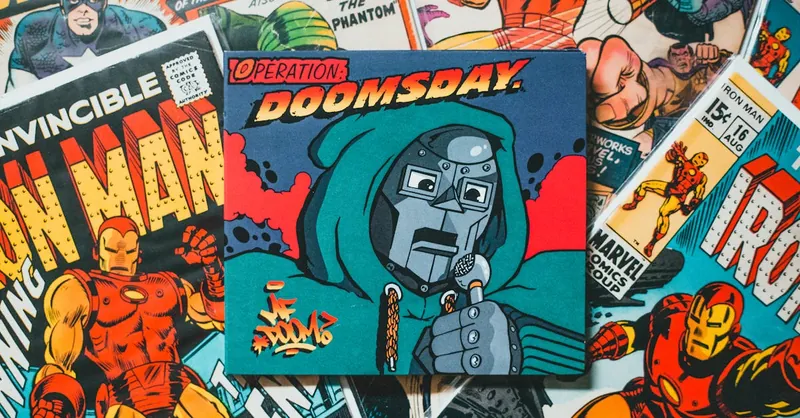
Image courtesy of Erik Mclean
